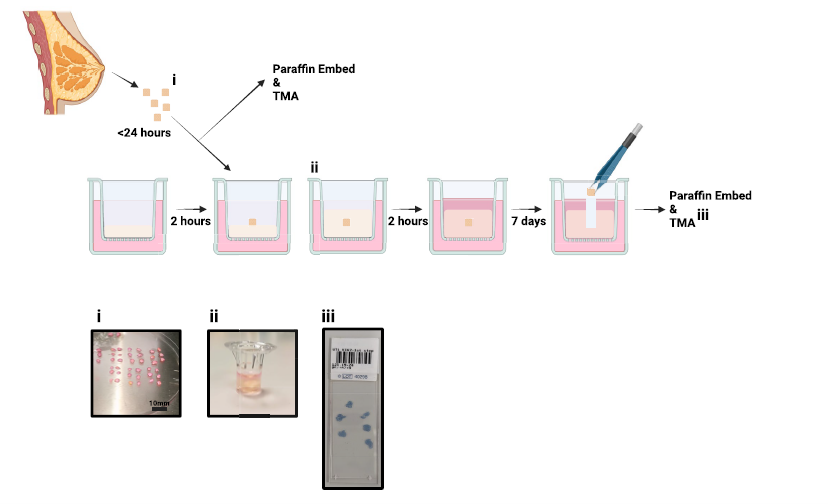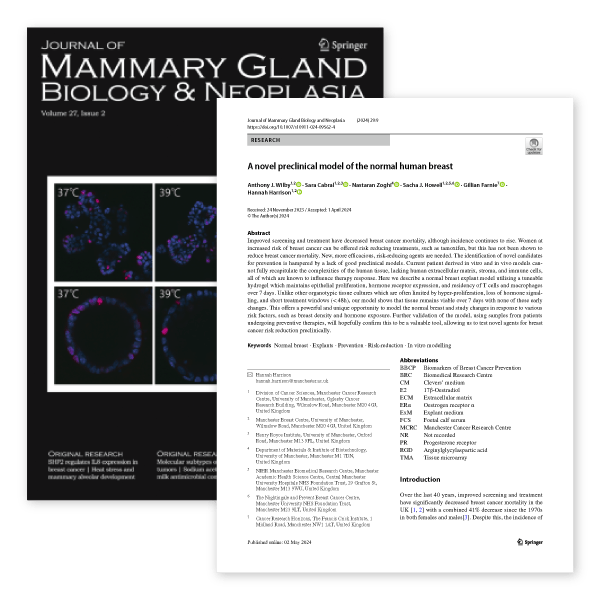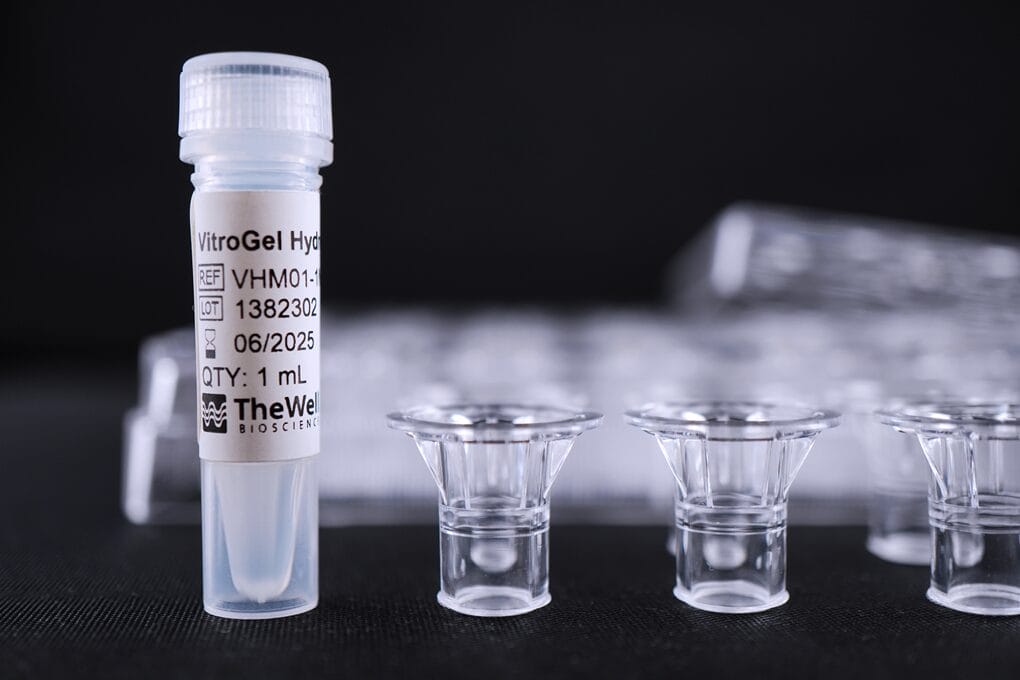Research Highlights
A Novel Pre-Clinical Model of the Normal Human Breast

Institutions:
Manchester Cancer Research Centre, University of Manchester
Team:
Anthony J. Wilby, Sara Cabral, Nastaran Zoghi, Sacha J. Howell, Gillian Farnie, and Hannah Harrison
Disease Model:
3D Cell Models & Functional Assay
Subcategory / Tissue Type:
ex vivo models / human breast tissue
Hydrogel:
VitroGel® RGD
VitroGel® helps to maintain viable organotypic breast tissue cultures over 7 days without losing phenotype properties.
Breast cancer remains a significant health challenge, with rising incidence rates despite improved screening and treatment methods. Current preclinical models often fail to replicate the complexities of human breast tissue, leading to issues such as abnormal cell proliferation, loss of hormone signaling, and reduced viability. These limitations hinder the identification and testing of new risk-reducing agents for breast cancer. Without a robust 3D model, people struggle to maintain the cellular heterogeneity and hormone signaling necessary for accurate studies.
Anthony Wilby and colleagues developed a novel preclinical model of the normal human breast using VitroGel® RGD High Concentration to address these issues. They utilized VitroGel® RGD to achieve the desired elastic modulus, which is representative of tissue stiffness. The hydrogel was combined with a medium to initiate gelation and used to support breast tissue explants in a 3D culture environment. In this study, VitroGel® RGD played a crucial role in maintaining the normal characteristics of breast tissue. They found that VitroGel® RGD with an elastic modulus of 413.78 Pa was optimal for preventing hyper-proliferation and maintaining tissue viability and morphology over 7 days. This setup allowed for the preservation of epithelial proliferation, hormone receptor expression, and the presence of immune cells, such as T cells and macrophages, which are essential for the accurate modeling of human breast tissue. The ability to experimentally adjust the elastic modulus of the hydrogel also provided a unique opportunity to study the impact of increased tissue density on cellular and stromal components. This flexibility makes VitroGel® RGD an invaluable tool for preclinical testing of novel agents and understanding the biological effects of various risk factors.
In summary, the VitroGel® RGD system addresses the critical limitations of previous models by providing a more accurate representation of normal human breast tissue. This advancement enhances the study of breast cancer risk factors and paves the way for testing new preventive therapies. The success of this model suggests that VitroGel® RGD could be instrumental in similar studies, offering a promising future for cancer research and prevention.
Products Used






